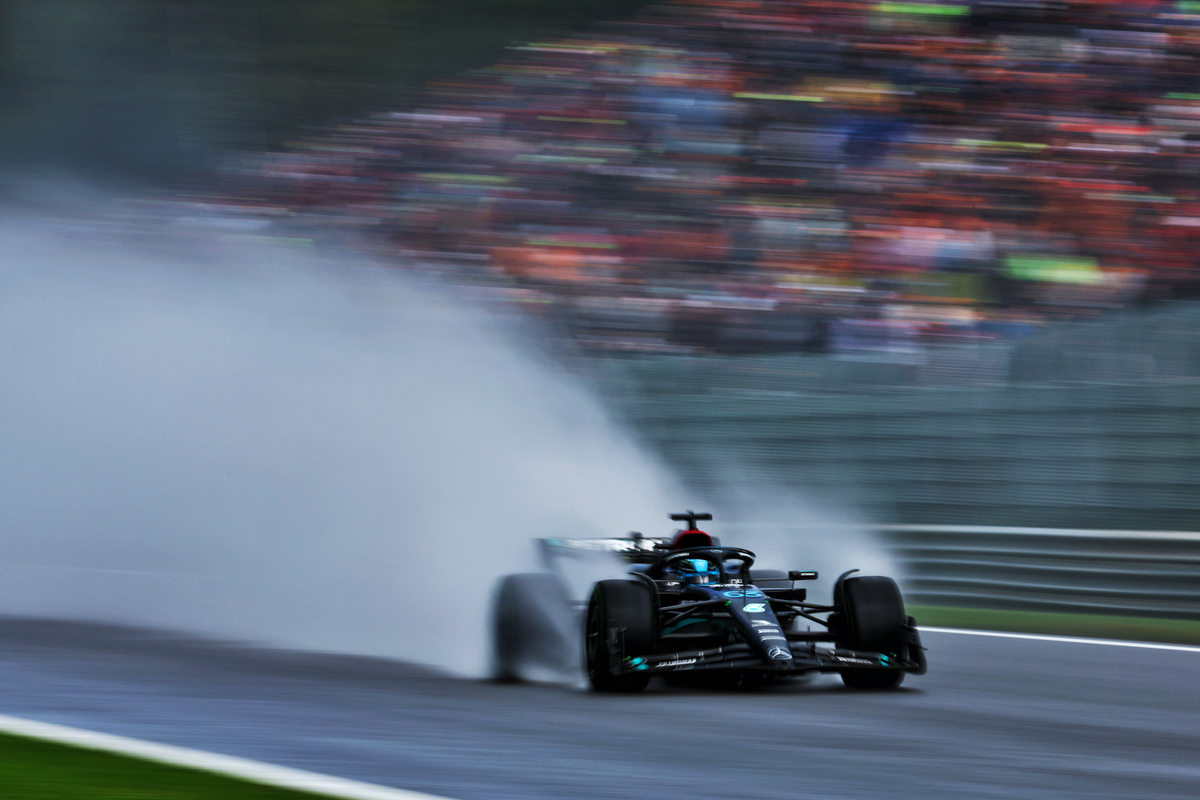

FIA single seater boss Nikolas Tombazis has offered an insight into the delays surrounding the investigation of wet weather spray guards for use in F1.
Earlier this year, track running was carried out with guards fitted to the rear of a Mercedes W14 in wet conditions.
The hope was the guards would reduce spray and improve visibility, a point that has become the primary concern when running in the rain with drivers calling for a fix to be fast-tracked.
“The test done in July with the help of Mercedes and also a bit of support from McLaren was… the covers were too small, they didn’t really cover enough of the wheels,” Tombazis said.
“We felt that they therefore didn’t really answer the question whether that’s a cure or not.
“What we still have a doubt about is what proportion of the problem is due to the overall diffuser and sucking the water from the track – which is something clearly this thing won’t fix – and how much of it is because of the wheels.
“We know both factors are quite significant.
“We’re not aiming to solve everything, we know there will still be visibility issues, but we want to see what percentage we can cure by a very complete cover of the wheels.
“And then, if we see that’s actually a tangible step forward, then we’ll optimise that.”
A second round of testing was due to take place last month but has been delayed until May.
That is in the interests of cost saving as the components were set to be developed by the teams themselves.
However, with production capacity and lead times as they are, to meet the November deadline, the sport would have been forced to look externally.
Rather than introduce that cost, the FIA agreed to delay the second test.
“That would have been really expensive,” Tombazis said of taking the project externally.
“[The teams] asked whether they could delay the test to Spring in order to cut the cost down a bit, which is why we thought that’s sensible.
“From a technical point of view, [we] would have preferred to have done it already, of course, but that was too expensive.”
When running does resume, it will be centred on information gathering more than testing a final solution.
“It’s sort of information gathering to see if that is actually the right path,” Tombazis reasoned.
“Alternatively, if the test doesn’t go well in the Spring, we may abandon that course and then have to rethink about what to do, I guess.”
The outcome of that test will also help determine the timeline for the concept making its way onto a race car.
That is not expected to happen before 2026, when new regulations are introduced.




















Discussion about this post